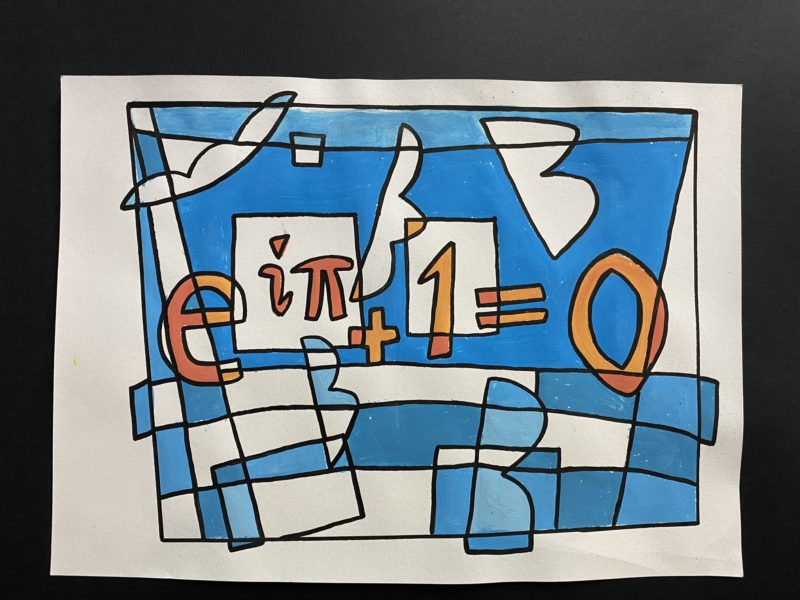Johann Carl Friedrich Gauss (30 April 1777 – 23 February 1855) was a German mathematician and physicist who made significant contributions to many fields in mathematics and science. Gauss ranks among history’s most influential mathematicians.

Gauss was a child prodigy in mathematics, and made several important mathematical discoveries as student at the University of Göttingen. Gauss completed his masterpieces Disquisitiones Arithmeticae and “Theoria motus corporum coelestium” as a private scholar, and afterwards, he was director of the Göttingen Observatory and professor at the university for nearly half a century, from 1807 until his death in 1855.
Gauss published the second and third complete proofs of the fundamental theorem of algebra, made important contributions to number theory and developed the theories of binary and ternary quadratic forms. He is also credited with inventing the fast Fourier transform algorithm and was instrumental in the discovery of the dwarf planet Ceres. His work on the motion of planetoids disturbed by large planets led to the introduction of the Gaussian gravitational constant and the method of least squares, which is still used in all sciences to minimize measurement error.
Furthermore, Gauss invented the heliotrope in 1821, a magnetometer in 1833, and alongside Wilhelm Eduard Weber, invented the first electromagnetic telegraph in 1833.
Gauss was a careful author and refused to publish incomplete work, and though having published extensively, he left a lot of posthumous works of important content. Gauss was known to dislike teaching, but some of his students became influential mathematicians. He believed that the act of learning, not possession of knowledge, granted the greatest enjoyment.
Gauss married twice and had six children, and died of a heart attack in 1855 in Göttingen.
Algebra, number theory, complex analysis
In his doctoral thesis from 1799 Gauss proved the fundamental theorem of algebra. Mathematicians had produced false proofs before him, and Gauss’ dissertation contains a critique about it. He subsequently produced three other proofs, the last one in 1849 being generally rigorous. His attempts clarified the concept of complex numbers considerably along the way. Gauss was the first one who used the symbol i for representing the imaginary number.
The entries in Gauss’ Mathematical diary indicate that he was busy with subject of number theory at least since 1796. A detailed study of previous researches showed him that some of his findings had been already done by other scholars. In the years 1798 and 1799 Gauss wrote a voluminous compilation of all these results in the famous Disquisitiones Arithmeticae, published in 1801, that was fundamental in consolidating number theory as a discipline and covered both elementary and algebraic number theory. Therein he introduces, among other things, the triple bar symbol ≡ for congruence and uses it in a clean presentation of modular arithmetic. It deals with the unique factorization theorem and the primitive root modulo n. In the main chapters, Gauss presents two proofs of the law of quadratic reciprocity, which allows mathematicians to determine the solvability of
any quadratic equation in modular arithmetic, and develops the theories of binary and ternary quadratic forms. He also proved this triangular case of the Fermat polygonal number theorem for n = 3.
In the last chapter of the Disquisitiones Gauss gives his proof for the construction of a regular heptadecagon with straightedge and compass by reducing this geometrical to an algebraic problem. The construction is possible, if the number of its sides is the product of distinct Fermat primes and a power of 2.
It appears that Gauss already knew the class number formula in 1801. In the same year, he published a result on the number of solutions of polynomials with coefficients in finite fields, which 150 years later led to the Weil conjectures. Furthermore, he dealt with continued fractions and the prime number theorem. In addition, he proved Fermat’s Last Theorem for n = 5 and Kepler conjecture for regular arrangements.
He invented the Cooley–Tukey FFT algorithm for calculating the discrete Fourier transforms when calculating the orbits of Pallas and Juno in 1805, 160 years before Cooley and Tukey. Gauss developed it as a trigonometric interpolation method, but his paper Theoria Interpolationis Methodo Nova Tractata was published only posthumously in 1876 in Volume 3 of his collected works, preceded by the first presentation by Joseph Fourier on the subject in 1807.



